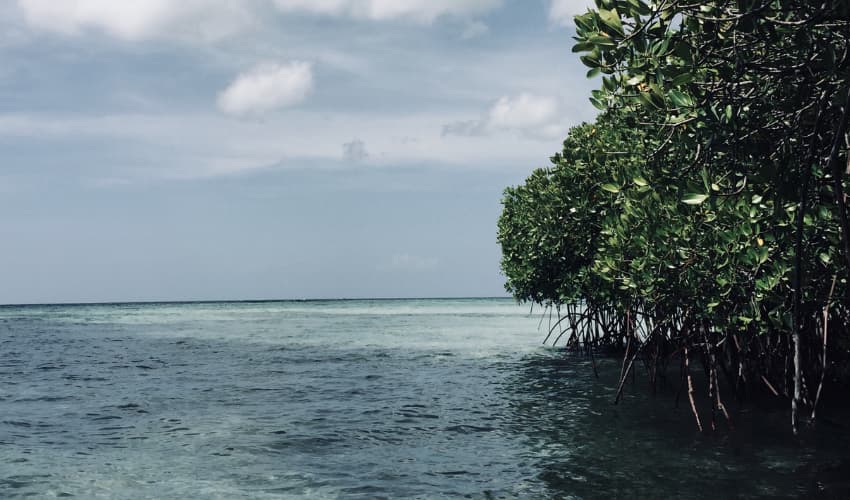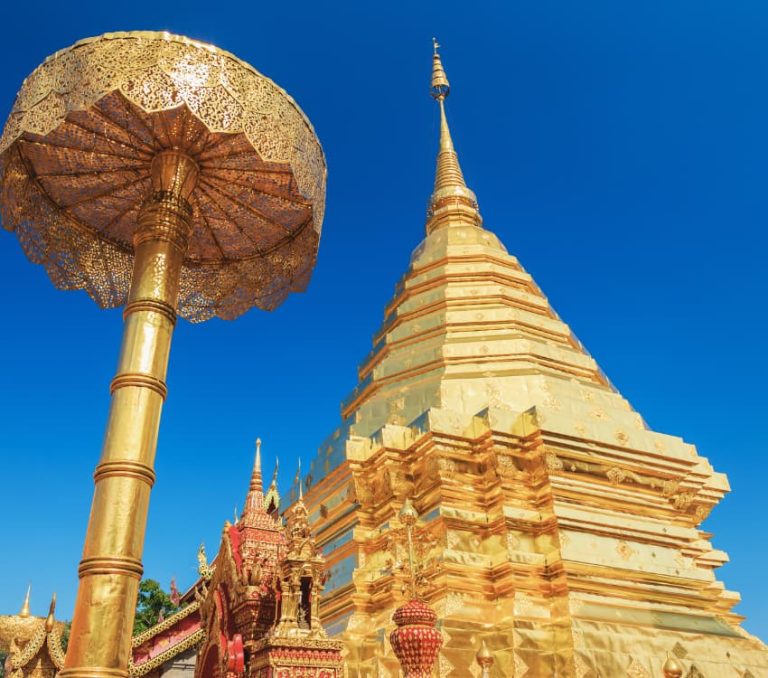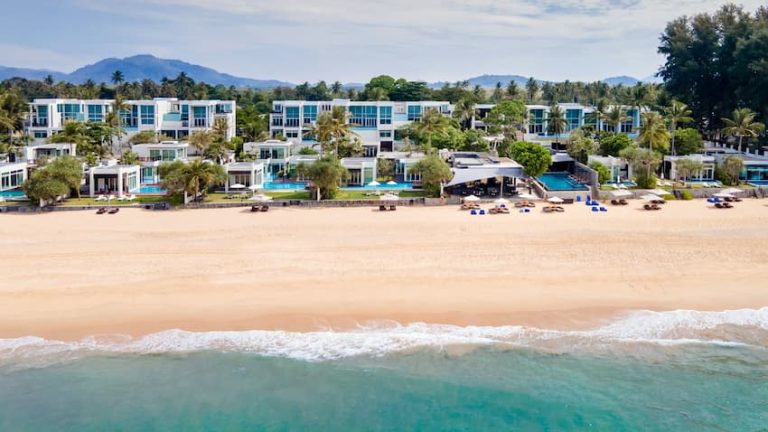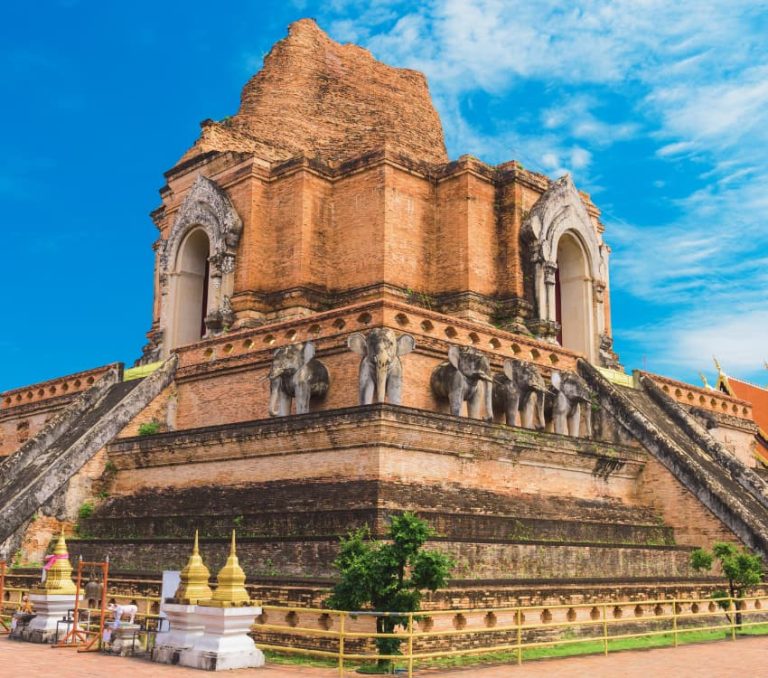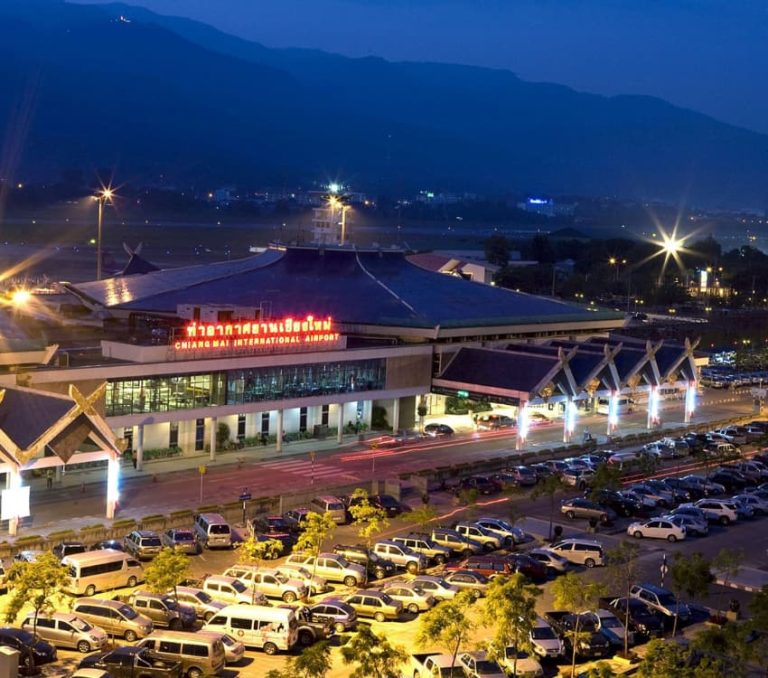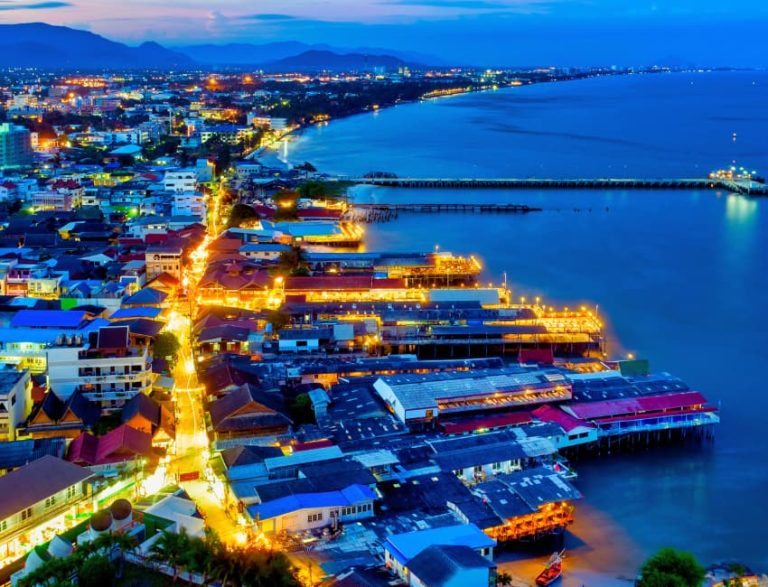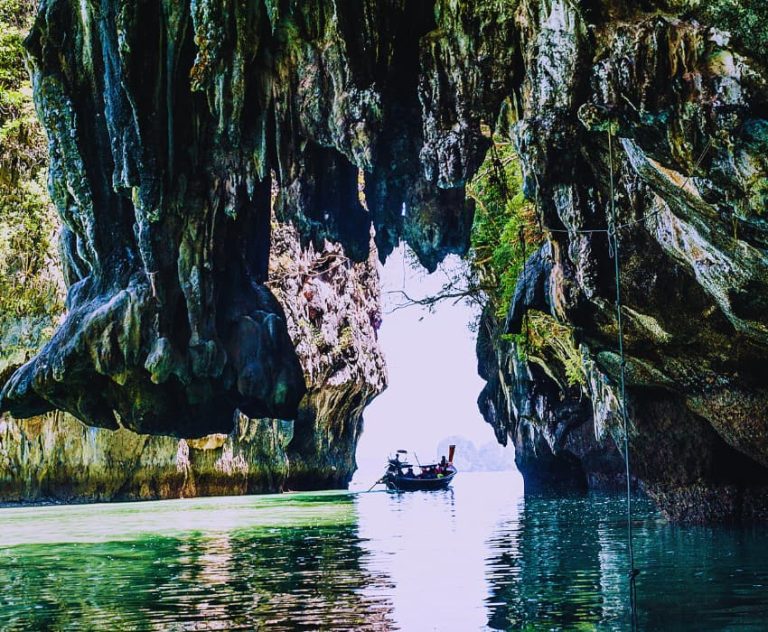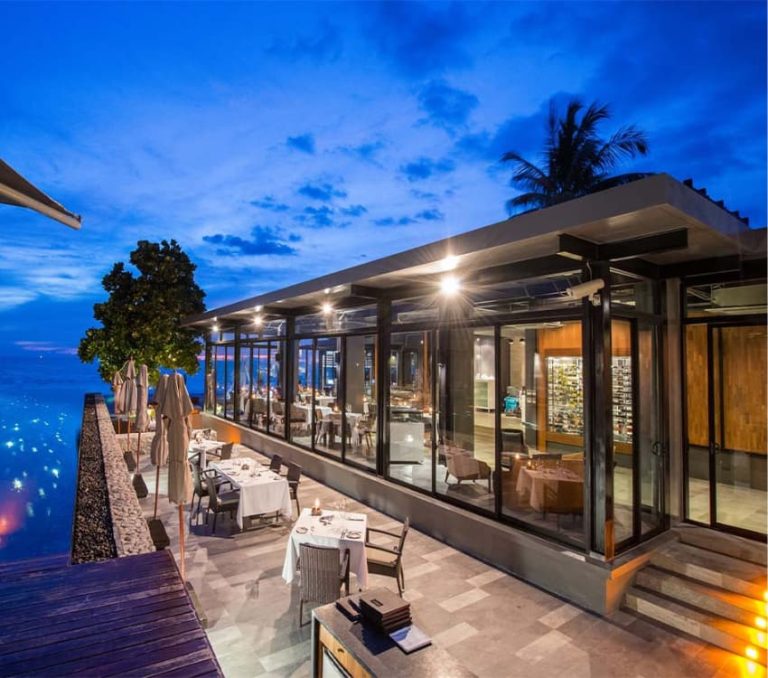As we become increasingly conscious of our carbon footprint and sustainably selective about where we stay, Aleenta Hua Hin invites you to offset your carbon footprint by planting mangrove trees at the Khao Sam Roi Yot National Park.
Mangrove forests are a essential for many marine species as they spawn and spend their early life protected in the mangrove maze. Mangrove forests are also excellent carbon sinks, or absorbers of carbon dioxide, a good way to reduce global warming.
Khao Sam Roi Yot Mangroves
Khao Sam Roi Yot National Park represents a number of important “firsts” for Thailand. It is the country’s first marine national park. It is also the biggest natural wetlands areas in the country, as well as the largest freshwater marsh area.
Khao Sam Roi Yot translates to mean “the mountain with three hundred peaks.” In actuality, this name refers to the natural limestone formations ringing Thailand’s gulf, some reaching 605 meters high. But what really makes Khao Sam Roi Yot National Park unforgettably special is the mangroves.
The native mangroves create an ecosystem unlike any other in the world, rich with the type of native biodiversity that is becoming increasingly scarce worldwide.
The fact that the entire Khao Sam Roi Yot National Park is now a protected area preserves not just the flora and fauna but also the history and legends associated with this one-of-a-kind natural park destination.
The Mighty Mangroves of Khao Sam Roi Yot
Mangroves are a tree species unlike any other. They are the only known tree species that can live and thrive in saltwater or brackish marsh water, which is incredibly important to help stabilise coastal areas and trap important nutrients that might otherwise get flushed away with storms and tidal movements.
When the salt intake gets too much to tolerate, mangrove trees simply excrete out any excess through their leaves. This can give mangrove leaves a strange waxy look and feel but it serves a protective purpose for the tree.
Mangroves have developed a special root adaptation to tolerate tidal fluctuations. At high tide, a mangrove looks more like an ordinary tree. But come by at low tide and you will see a massive root ball extending above the ground’s surface!
This root ball is incredibly important to help stabilise and protect the areas where mangroves grow. The roots guard against erosion, which is especially vital in flood-prone Thailand where monsoons and tidal flows represent real dangers to local villages.
But the roots also attract a rich and diverse assortment of aquatic life, including fish, small crustaceans, frogs and even beneficial bacteria and fungi that contribute to these micro-ecosystems among the mangrove roots. Fish, lizards, snakes, birds and other wildlife often choose to raise their young in mangrove stands for both their protective features and easy access to food sources.
Mangrove trees are one of the most valuable allies in the fight to cope with greenhouse gases, most especially carbon gases. Mangrove ecologies are now being called “blue carbon ecosystems” due to their ability to trap and recycle carbon dioxide and other damaging carbon-based gases.
They do this by establishing what are called “carbon sinks,” areas where carbon is captured, held and slowly converted into less dangerous biomass, with some help from friendly bacteria and fungi.
In one exciting recent study, scientists discovered mangrove stands may be able to store even more carbon than was previously thought, making mangroves a major global resource for recycling dangerous greenhouse gases into useful biomass.
In this way, Thailand’s Khao Sam Roi Yot mangroves serve an equally important role as ambassadors for mangrove stands worldwide and the vital function they serve to clean up our planet. Thailand itself is a vital part of strengthening global ecology – nearly half of its coastlines include mangrove stands.
Khao Sam Roi Yot National Park was founded in 1966, well before the modern devastation of mangrove stands around the world would begin. Today, scientists and mangrove researchers also visit Khao Sam Roi Yot National Park to study the mangroves and learn more about how they function to stabilise and strengthen local ecosystems as well as how they propagate and spread.
In this way, researchers have learned a great deal about current global warming trends by watching the movements of mangroves. Mangrove trees cannot handle cold temperatures and will only propagate in areas that offer tropical or semi-tropical conditions year-round. Researchers have witnessed the steady and rapid spread of mangroves to areas affected by global warming.
Mangroves can colonise newly warmer areas in ways other trees can’t – they send their seeds, or propagules, out by water! Recent increases in extreme weather are also thought to have aided the spread of mangroves to areas where they can help strengthen and stabilise coastal ecosystems.
In Thailand, mangrove stands have been systematically devastated by local shrimp fishing and other aquaculture activities as well as ongoing commercial development. But today, as more research brings to light the true value of mangrove stands, programs such as Mangroves For the Future are taking action to protect, preserve and expand the presence of mangroves throughout the country.
Other Sights to See At Khao Sam Roi Yot National Park
At Khao Sam Roi Yot National Park, no two days are ever the same, and yet every day is filled with natural beauty, mystery and wonder. You may see different sights at the exact same spot depending on what time you arrive!
Your vantage point can also change what you see. For example, strolling along the boardwalk that takes you through the mangrove portion of the park will give you a different perspective than chartering a local longboat to view the mangroves from the river itself.
1. Phraya Nakhon Cave
Many visitors initially arrive to see the near-legendary Phraya Nakhon Cave, a truly jaw-dropping sight tucked away deep inside a spacious domed cave. The cave formed around an enormous sinkhole that channels sunlight in an unusual way, drawing photographers from around the world.
As a side note, “Indiana Jones and the Temple of Doom” fans won’t want to miss this experience – it is about as close to actually being on the set as you will ever get.
There are multiple ways to get there, but all will eventually require a trek up some particularly rocky steps so be prepared!
2. Kaeo Cave
While both Phraya Nakhon and Kaeo are located in the same park, they couldn’t be more different and you really want to see both to grasp just how rich the biodiversity is in this region of the world.
Kaeo Cave is impossible to navigate without a guide and plenty of man-made light – the cave is in complete darkness otherwise. The cave takes its name from its glittering walls that appear to be encrusted with gemstones.
For insect buffs, it is also often possible to spot the Asian forest scorpion seasonally, which enjoys the cave’s cool interior during the heat of summer.
3. Sai Cave
Unlike Kaeo Cave, you can tour Sai Cave on your own if you wish. The chief draw here is the incredibly lovely natural formations of stalactites and stalagmites lining the interior.
4. Thung Sam Roi Yot Freshwater Marsh
Thung Sam Roi Yot is one of Thailand’s largest freshwater marsh areas and is home to an amazing variety of native species, many of which are found nowhere else in the country.
The freshwater marks is located on the northwest end of the park itself and it is actually recognised under an international treaty as an ecologically significant natural wetland.
For visitors who enjoy taking photographs, the marsh offers one of the best vantage points to capture images of the natural limestone formations and the surrounding rivers, towns and gulf. Many famous photographs of the area were taken from inside the marsh.
5. Laem Sala & Sam Phraya Beach
The national park includes two popular beaches, both located in the northeastern corner of the park. Both beaches offer a great opportunity to enjoy views of Thailand’s marine life at play.
Laem Sala Beach is closest to Phraya Nakon Cave while Sam Phraya is lined with palm trees for a different experience.
6. Khao Daeng Viewpoint
Near the Khao Sam Roi Yot National Park headquarters is a popular outlook frequented by photographers, birders and hikers alike. Located about 700 meters up on top of a limestone formation, it requires a bit of a climb to reach the top, but the views are worth it.
7. Khao Daeng Canal
Boat tours through the mangroves are very popular, especially near sunset when local wildlife is easy to spot. The boat tours will also take you through the village of Khao Daeng, giving you unique glimpses of rural life in Thailand.
8. Phu Noi Beach
Called “Dolphin Bay,” this beach is located just north of the park itself, but if you love dolphins you will want to do your best to schedule in a visit. The indigenous dolphin population includes both grey and pink bottlenose dolphins and they are becoming increasingly rare.
Where Is Khao Sam Roi Yot National Park Located?
The national park is situated at the edge of rural Pranburi, Hua Hin, Thailand, a lesser-known go-to destination for globe-trotting nomads in the know and the tourists lucky enough to meet them.
While the town itself is easygoing, laid back and lovely, you won’t lack for luxury in your lodging at the popular nearby beachfront resort and spa!
The park is also just three hours from Bangkok, making it a relatively easy trip to get to and from the airport.
Related Articles
- Khao Sam Roi Yot National Park in Hua Hin
- Hua Hin Travel Guide
- Pranburi Travel Guide
- The Best Beaches in Hua Hin
- Exploring Pak Nam Pran in Pranburi
Aleenta Hua Hin
Pranburi Resort & Spa
Pranburi Resort & Spa

